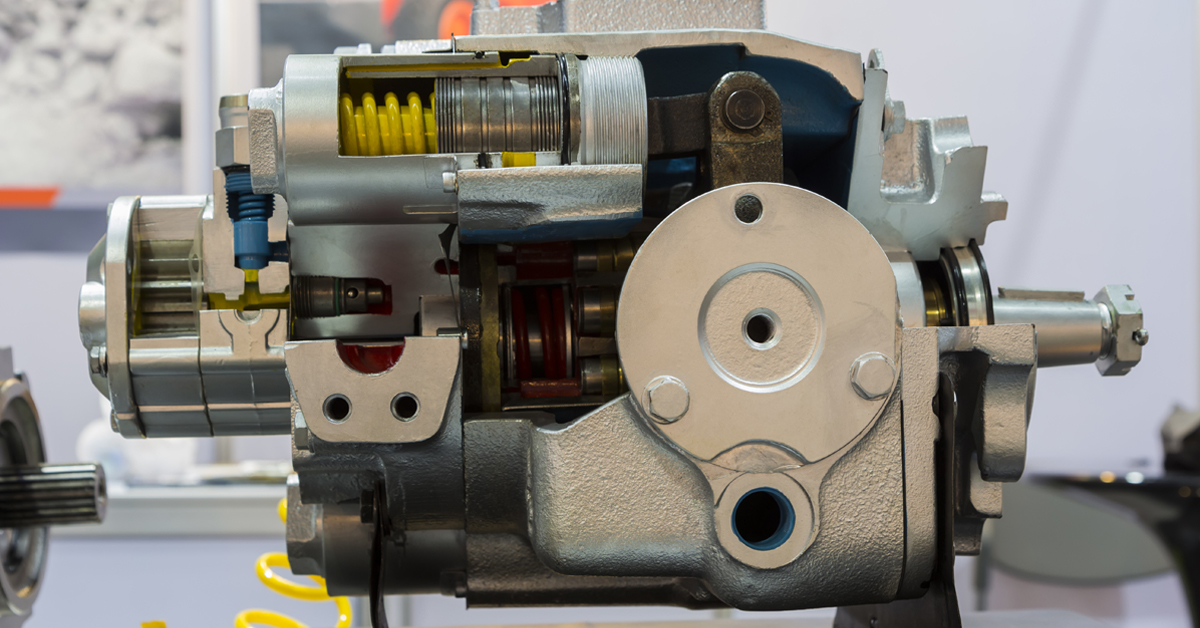
From producing energy to dewatering floods, hydraulic piston pumps are an essential part of machinery used to control the flow of fluid. There are several types of piston pumps, and each one offers a variety of applications.
When you are managing a plant, you need to ensure the piston pump machinery you oversee is working at all times. Without it, operations will easily halt. It is therefore vital for plant managers to understand the essentials of piston pumps and how a hydraulic piston pump works. Read on to learn more about piston pumps and how they operate:
What Is a Piston Pump?
A hydraulic piston pump is a type of reciprocating positive displacement pump that creates high amounts of pressure to help with the flow of fluid, such as water. It is powered by a hydraulic drive mechanism that helps move the fluid down a cylindrical-shaped chamber. These reciprocating pumps have an outer diameter seal with a piston rod attachment. They work by creating pressure by distributing energy into the pumped fluid. This action results in a pressurized fluid cylinder.
Piston pumps are ideal when an application requires higher flow rates of fluid and low pressure, which can discharge fluid at a high rate with little effort. Piston pumps are also useful for washing down surfaces, thanks to their ability to create high pressure; they can create up to 10,000 pounds of differential pressure per square inch. However, there are a variety of piston pumps on the market, and each version works a bit differently.
Types of Piston Pumps
Piston pumps aren’t created equal, and each one is best applied in a variety of situations. Some are more ideal for low pressure needs, while others must apply to high pressure needs so the flow of fluid produces the desired results. Thus, it is vital to understand how each one works. Here are some of the most common types:
AXIAL
Axial pumps are referred to as propeller pumps due to their propeller design. These pumps push the flow of fluids in a spiral-like motion along the axis. Axial piston pumps have a variety of applications, including driving torpedo screws or being used for jets. They can operate in temperatures as high as 248 degrees Fahrenheit and are made up of other pump types, including bent axis and inline axial piston pumps. These pumps are ideal for producing high flows of fluid and are essential in dewatering floods.
INLINE
Inline axial piston pumps are highly efficient piston pumps. These types of axial piston pumps are ideal for managing high flows of fluid, making them suited for water pressurization. This type of pump works in the same manner as a bent axis pump but with less rotary capability. However, its ability to produce pressure sufficiently makes it a highly reliable type of axial piston pump that applies to a variety of applications.
BENT AXIS
This type of hydraulic piston pump has greater flexibility than an inline axial piston pump, since it can bend up to 20 degrees more than an inline pump at 40 degrees. Its design also allows it to spin at faster rates than inline piston pumps. These pumps work by bending the cylinder block on its axis, which causes it to turn at an angle.
RADIAL
Radial piston pumps distribute energy into fluid systems by pushing the flow of fluid outward. Radial piston pumps are able to create high amounts of pressure, making them highly reliable and efficient forms of hydraulic piston pumps. These pumps are instrumental in a variety of applications, including rig testing, machinery and energy generation.
PLUNGER
A plunger pump is a positive displacement pump that has a cylindrical shape. This pump produces energy that helps push fluid along thanks to the reciprocating or “back-and-forth” motion of the plunger. While these types of piston pumps may cost more than other types, they are very durable and reliable. That means you can count on plunger pumps to last for long periods without breaking down. This benefit also explains why plunger pumps are one of the most common types of hydraulic piston pumps used today. Plungers are also useful when you need to meet high pressure and small capacity requirements. These pumps have a variety of applications from reverse osmosis to pressure washing.
Final Thoughts
It’s important to know how a hydraulic piston pump works so you can determine when it isn’t operating or functioning correctly. Whether you need to be able to stop flooding or have the right devices to produce water facilitated by reverse osmosis, you need to have pumps that are in perfect working order. Gaining an understanding of how these devices work will help to make this assessment a possibility. But more so, it is also crucial to understand how a pump can be repaired in the event it breaks down.
When you need machinery assistance, consult with a professional that provides the right equipment and can offer expertise in hydraulic repair, such as Western Hydrostatics. By leveraging hydraulic repair, you can ensure your piston pumps are working to their full potential.






